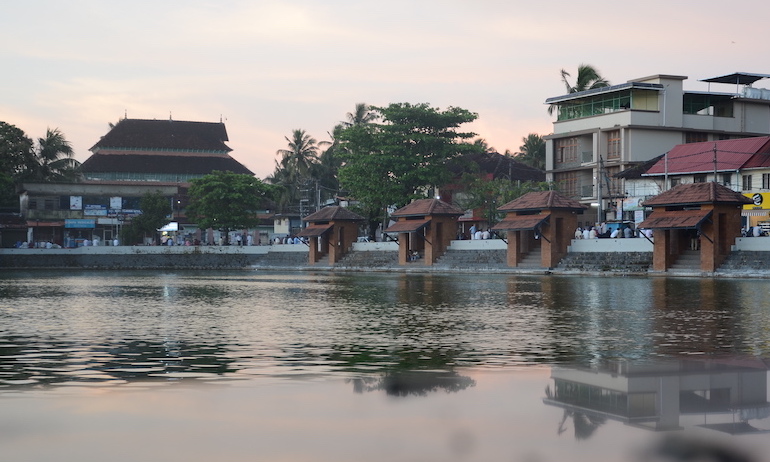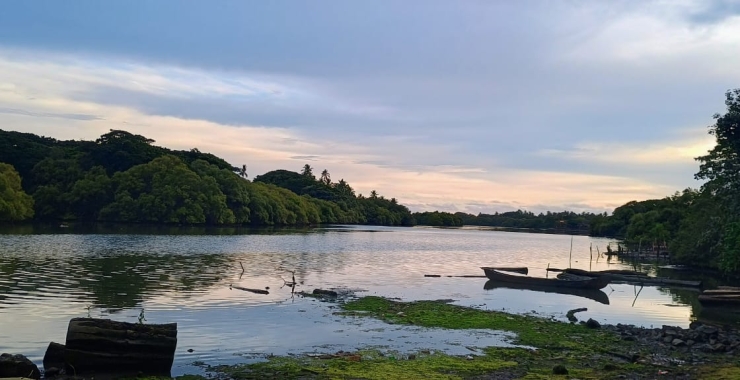Kuttichira
Kuttichira, located in the heart of Kozhikode ( Calicut), Kerala, is a neighbourhood steeped in history and culture, particularly known for its deep-rooted Islamic heritage. This area is one of the oldest Muslim settlements in Kerala and holds a unique place in the cultural tapestry of the region.
Historical Context
Kuttichira’s history is intricately linked to the broader history of Kozhikode, which was a major trading hub on the Malabar Coast. From the 12th century onwards, Kozhikode attracted traders from across the Arabian Sea, particularly from the Arab world. These traders, many of whom were Muslims, played a significant role in the spread of Islam in Kerala. They established settlements like Kuttichira, which became centers of Islamic learning, culture, and commerce.
The arrival of these traders also led to the construction of mosques and other religious institutions. Kuttichira quickly became a prominent Muslim quarter, where the fusion of Arab, Persian, and local Malayali traditions gave birth to a distinct cultural identity. The neighborhood’s evolution over centuries reflects the socio-economic and religious developments in the region.
Architectural Marvels
Mishkal Mosque (Kuttichira Juma Masjid)
One of the most iconic landmarks in Kuttichira is the Mishkal Mosque. Built in the 14th century by the Arab merchant Nakhooda Mishkal, the mosque is a quintessential example of how Islamic architecture adapted to the local environment. Unlike typical Islamic mosques with domes and minarets, the Mishkal Mosque is constructed mainly of timber and follows the traditional architectural style of Kerala, with sloping roofs and extensive wooden carvings.
The mosque originally had five storeys, but after being partially destroyed by the Portuguese in 1510, it was rebuilt with four storeys. The mosque’s unique architectural elements include its large, open prayer hall, intricately carved wooden beams, and numerous doors and windows that allow natural light to flood the interior. The prayer hall is spacious, accommodating hundreds of worshippers, and is adorned with simple yet elegant wooden decorations.
The mosque also houses ancient inscriptions and is a repository of local Islamic history. Despite its historical significance, the mosque remains an active place of worship, playing a central role in the religious life of the local Muslim community.
Muchundi Mosque
Another significant mosque in Kuttichira is the Muchundi Mosque, which predates the Mishkal Mosque. It is believed to have been built in the 13th century, making it one of the oldest mosques in Kerala. The Muchundi Mosque is less ornate than the Mishkal Mosque but equally important in the religious and cultural life of Kuttichira.
The mosque’s architecture reflects the simplicity and austerity of early Islamic structures in Kerala. It has a gabled roof, a characteristic feature of traditional Kerala buildings, and is constructed primarily of laterite, a material commonly used in the region. The mosque’s historical significance is further enhanced by its association with several prominent Muslim scholars and leaders who lived in the area.
Cultural Significance
Kuttichira is not just a historical site; it is a living, breathing community where traditions are passed down through generations. The neighborhood is a hub of cultural activities, particularly those that revolve around Islamic practices and festivities.
Religious Festivals and Practices
Kuttichira is especially vibrant during Islamic festivals such as Eid al-Fitr and Eid al-Adha. During these times, the mosques and streets are beautifully decorated, and the community comes together to pray, feast, and celebrate. The holy month of Ramadan is another period of intense religious activity, with special prayers (Taraweeh) held at the mosques, and communal iftar meals that bring the community together.
The Moulid (the celebration of the Prophet Muhammad’s birthday) is another important event in Kuttichira. During Moulid, special prayers, lectures, and processions are organized, often culminating in a grand feast. These events are not only religious in nature but also serve as a means of reinforcing community bonds.
Mappila Culture
Kuttichira is a stronghold of Mappila culture, which is a blend of Arab and Malayalam traditions. Mappila Paattu(Muslim folk songs) and Oppana (a traditional dance form performed at weddings) are integral parts of this culture. These art forms are deeply rooted in the local Muslim identity and are often performed during weddings, religious events, and other celebrations.
Mappila Paattu, in particular, is known for its poetic lyrics, which often narrate stories from Islamic history, the lives of the prophets, and the experiences of the Mappila community. The songs are usually performed in a group, with singers accompanied by traditional instruments like the duff (a type of drum).
Oppana is another cultural highlight, especially during weddings. It involves a group of women singing and dancing around the bride, clapping hands rhythmically. The dance is both a form of entertainment and a way to bless the bride, and it showcases the strong sense of community and tradition in Kuttichira.
Social and Educational Institutions
Kuttichira is also known for its educational and social institutions, many of which have been established by the local Muslim community over the centuries. These institutions play a crucial role in preserving and promoting Islamic education and values.
Dars Schools
Dars is a traditional system of Islamic education that has been prevalent in Kuttichira for centuries. The Dars schoolsattached to the mosques offer religious education to children and adults alike, covering subjects like Quranic studies, Hadith (teachings of the Prophet Muhammad), Fiqh (Islamic jurisprudence), and Arabic language. These schools have produced numerous Islamic scholars who have contributed to the religious and intellectual life of Kerala.
Social Organizations
Kuttichira is home to various social organizations that work towards the welfare of the community. These organizations often focus on areas like education, healthcare, and poverty alleviation. They play a crucial role in maintaining the social fabric of Kuttichira, ensuring that the community’s needs are met while preserving its cultural and religious heritage.
Modern Developments
While Kuttichira retains much of its traditional charm, it has also adapted to modern times. The neighborhood has seen infrastructural developments, with improved roads, modern amenities, and new housing. However, these developments have been carried out in a way that respects the historical and cultural significance of the area.
The younger generation in Kuttichira is increasingly balancing tradition with modernity. Many young people are pursuing higher education and professional careers while remaining deeply rooted in their cultural and religious identity. This blend of tradition and modernity is what makes Kuttichira unique.
Tourism and Cultural Preservation
In recent years, Kuttichira has attracted the attention of tourists and historians alike. Efforts have been made to promote the neighborhood as a cultural heritage site, with guided tours that showcase its historical landmarks, mosques, and cultural practices. These initiatives aim to preserve Kuttichira’s rich heritage while sharing it with a broader audience.
However, there is also a growing awareness of the need to protect Kuttichira from the negative impacts of tourism and modernization. Community leaders and cultural preservationists are working together to ensure that Kuttichira’s historical and cultural integrity is maintained for future generations.
Conclusion
Kuttichira is much more than just a neighborhood in Kozhikode; it is a living repository of Kerala’s Islamic heritage. Its historical mosques, vibrant cultural traditions, and strong sense of community make it a unique and valuable part of the region’s history. As Kuttichira continues to evolve, it remains a testament to the enduring legacy of the Muslim community in Kerala, reflecting a harmonious blend of tradition and modernity.
/



